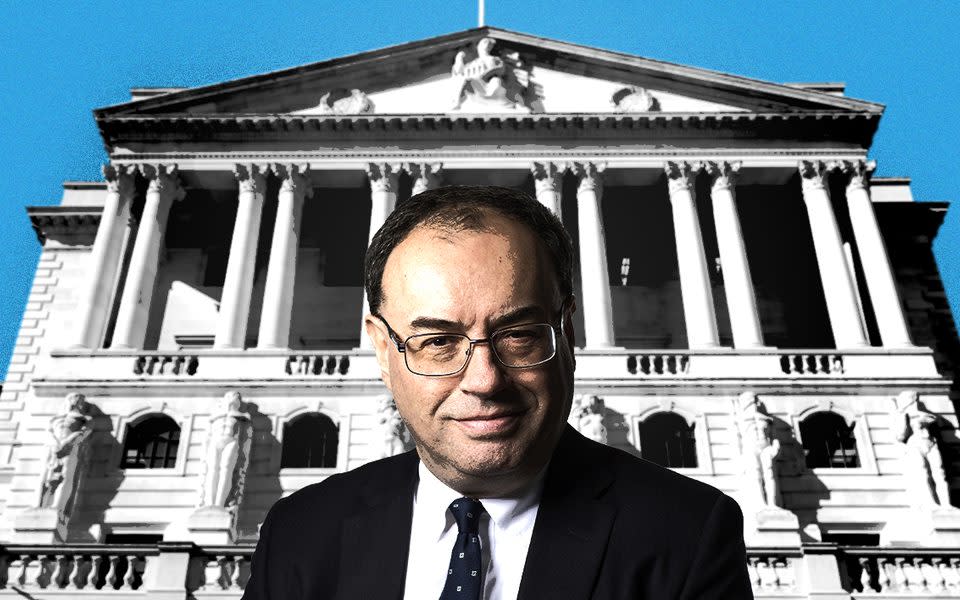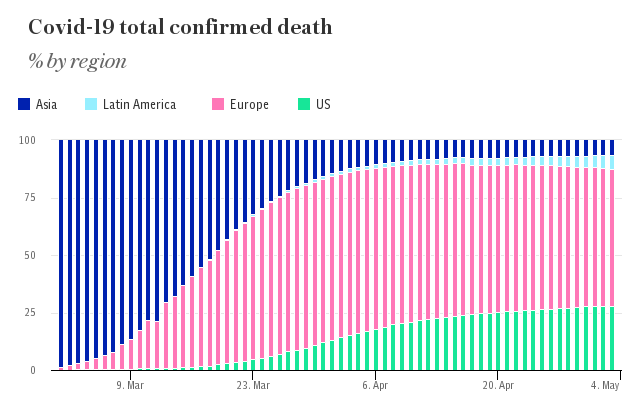Five headaches for the Bank of England as Covid crisis bites

Bank of England Governor Andrew Bailey is an accomplished firefighter and veteran of financial crises. But even he could not have imagined that he would have been wrestling with a global pandemic from a near-deserted Threadneedle Street less than two months into the job.
If he needed any reminder of the challenge he was up against, the latest purchasing managers' index survey showing the cataclysmic impact of Covid-19 on the UK’s dominant services firms warns the downturn will be “far deeper and more widespread than anything seen in living memory”.
The Office for Budget Responsibility has said the economy could collapse as much as 35pc this quarter, a scenario that Bailey himself has called “not implausible”.
But even as the immediate scale of the coronavirus blow begins to unfold in the official statistics, the Bank’s rate-setters will already be looking ahead and beginning to form crucial judgements on the long-term effects. The Bank’s latest Monetary Policy Report (MPR) and accompanying press conference should offer some signals on their chief concerns:
1. QE or not QE?
After slashing interest rates all the way down to 0.1pc and launching an extra £200bn in asset purchases through quantitative easing, most economists agree that there is more to come: the question is when.
The latest round of QE was less about meeting the inflation target than keeping gilt markets functioning. Before Threadneedle Street’s intervention on March 19, debt markets were verging on the disorderly and traders were dumping gilts in a dash for cash.
At the current rate of purchase the Bank’s latest spree will run out in mid-July, so what happens then? As the Treasury’s Debt Management Office is selling an unprecedented £180bn in gilts in the quarter to July to pay for Covid measures, the Bank is unlikely to let the debt market sink or swim so more QE looks likely either at this meeting or in June.
2. Monetary financing
The massive intervention will raise more concerns over monetary financing - the direct (and inflationary) funding of Government deficits by the central bank - even though officials and policymakers up to Bailey himself have been at pains to deny it over recent weeks.
Even though the Bank never buys directly from the Government, the close links between the pace of its purchases and the DMO’s own hefty sales look suspicious. The proposed use of the Ways and Means account - the Government’s overdraft - directly funded by the Bank adds to the smell.
Expect to hear a lot about the temporary nature of both schemes, even though there is no sign of QE being unwound 11 years after it began.
3. Scarring
The growth forecasts usually presented with the MPR will be inevitably dire, but less useful than usual due to the Covid uncertainty. The economic bombshell of the virus alongside a collapse in oil prices is however likely to keep any concerns over inflation on the backburner, as policymakers focus on deflation risks and the huge economic slack created by the crisis.
Many expect Threadneedle Street to follow the example of the European Central Bank, which presented a range of scenarios of between 5pc and 12pc drops this year for mild to severe disruption.
But hopes of a rapid V-shaped recovery are likely to be buried and of more interest will be hints on the Bank’s longer term assessment of the economic damage, including a possible lowering of the UK’s potential “speed limit” for growth.
Chris Scicluna, head of UK economic research at Daiwa Capital Markets, warns of rising unemployment and says the “crystallisation of bad debts in the private sector is going to take some time”. Liz Martins, HSBC’s UK economist, is braced for weaker demand, adding that “people may start to permanently reconsider their spending habits”.

4. Ammunition
Interest rates are already at the Bank’s lower bound so the Bank of England needs to show the market what firepower it has left. According to BAML’s UK economist Robert Wood, that could take the form of “open-ended” QE - as already undertaken by the Federal Reserve - or the even more radical policy of yield curve control employed by the Bank of Japan, intervening as necessary in bond markets to keep longer-term interest rates low.
Wood says: “We suspect the BoE will eventually move to this, but the difficulty of getting nine independent rate setters to agree to more than one interest rate target suggests this policy is not for now.”

5. Brexit
The UK’s departure from the EU may have slipped from the front pages but fractious negotiations are coming up against a deadline next month for the UK to agree a transition.
Talks are at an impasse over fishing rights and an outright collapse is a possibility, leading to hard Brexit. The Bank of England has already downgraded the UK’s growth prospects twice due to Brexit issues, and the faster than expected move to a more distant trade relationship with Europe at the end of the year.
But the prospect of a “no-deal” Brexit, along with the Covid-19 crisis, could thwart the Bank’s January assumptions that “business investment growth is expected to pick up as Brexit-related uncertainty falls back”. Scicluna adds that it “beggars belief” that businesses are being exposed to such risks at the current juncture. The Bank is likely to wait until August before changing its current assumptions as clarity on the talks emerges: it has enough on its plate for now.
